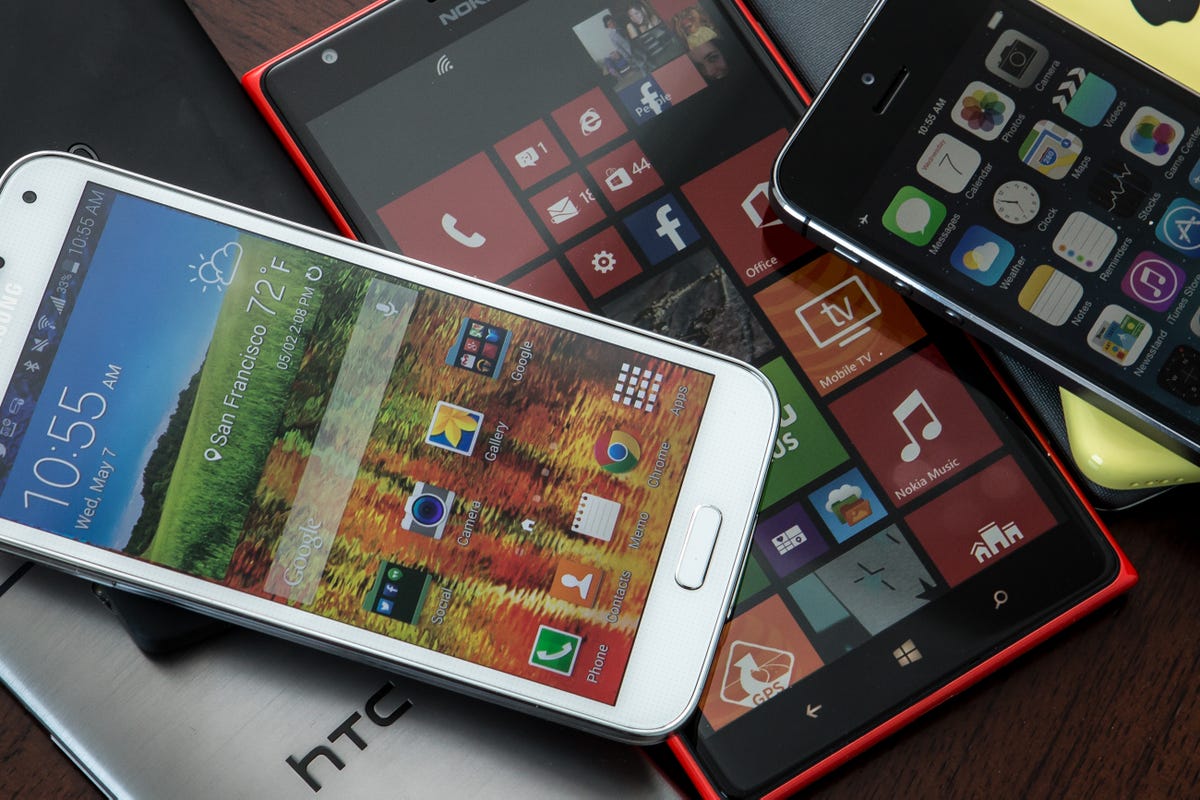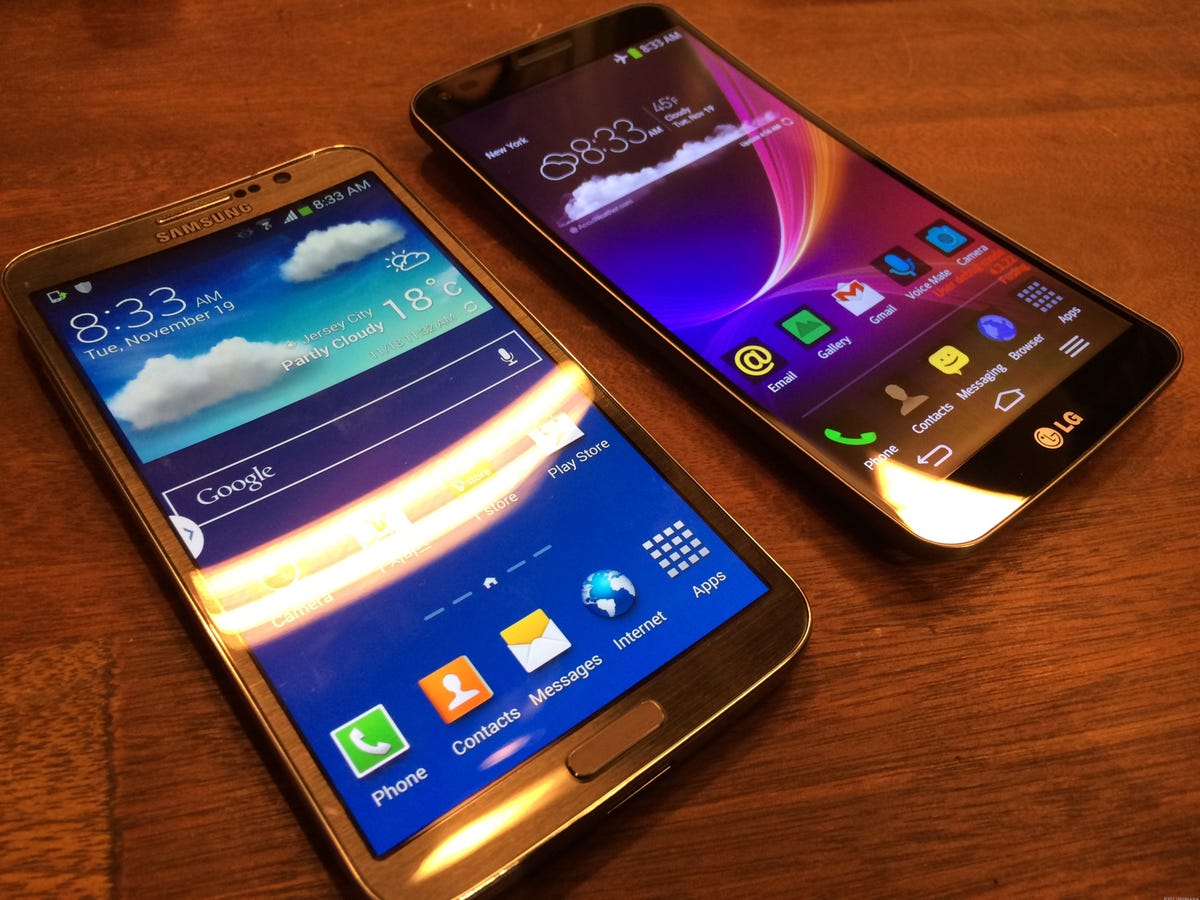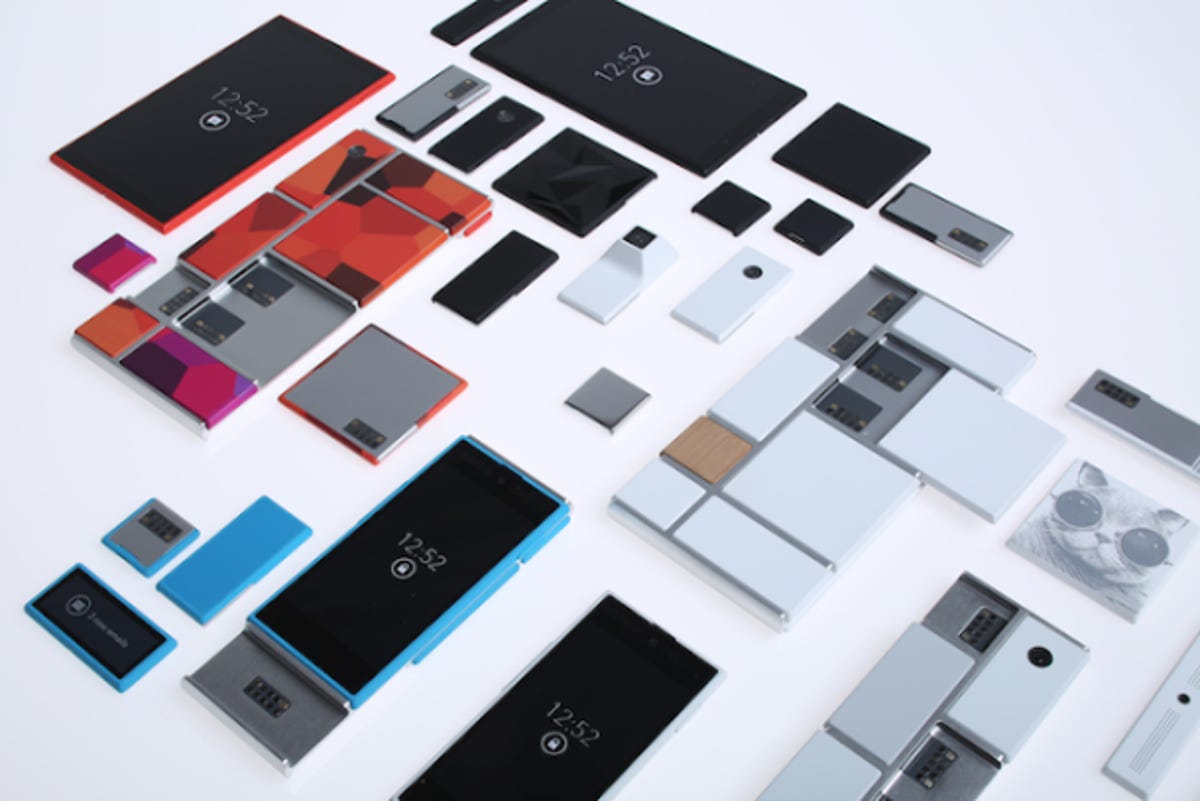
Josh Miller/CNET
There’s no doubt that the smartphone has made amazing strides since its humble beginnings. But lately I’ve heard a lot of people talk about how these days devices can have no room for real improvement. Every time a new flagship phone is due for release, manufacturers seem to just throw in incremental updates here and there, just as Apple did with its iPhone 5S , Samsung with its Galaxy GS5 , and HTC with its One M8 . So is it true that we’re past the moment of another sea change in devices?
Related stories
- The near future of smartphones (Smartphones Unlocked)
- Smartphone innovation: Where we’re going next (Smartphones Unlocked)
- Smartphone cameras: What’s coming next (Smartphones Unlocked)
Personally, I think not. Don’t get me wrong, I can always appreciate a new handset with obvious improvements like a bigger battery or a water-resistant construction. But when it comes to something ground-breaking, I imagine a smartphone of the future that reaches even greater heights. Ones that can run on infinite energy and shapeshift to my needs.
You might say that I’m a dreamer, but what I have in mind aren’t as far-reaching as you think. Below, I’ve compiled a vision (a wish list if you will), of what I’d want in a smartphone in the next decade. And while these capabilities range from being mere concepts to full-blown prototypes, I believe all of them are practical, and within our grasp. Who knows, we might just wake up tomorrow and hear one of these features being highlighted in the next developer keynote.
Let there be light: Exploring alternative power sources
Instead of waiting for handsets to come with higher-capacity batteries, I’d like to go one further and envision a smartphone that runs on an alternative power source altogether. That’ll eliminate the need to plug it in for charging, and I won’t have to worry about saving my device’s energy if I’m miles away from an outlet.


Josh Miller/CNET
I know that solar-powered battery packs already exist, but I want a polished, modern phone with charging panels built in. Manufacturers have attempted this somewhat: back in 2009, Samsung unveiled its E1107, the first solar-powered GSM feature phone that would require 1 hour of solar charging per 10 minutes of talking. Later that year, LG released its solar-charging GD510 Pop, and CNET reviewed its Blue Earth handset, which also had solar panels on the rear.
Though the devices had promise, they never really took off. As our review noted, the panels on the Blue Earth couldn’t charge if the handset was completely drained. But despite numerous challenges, manufacturers (like Nokia, for example) are still looking into this approach, and the fact that there are so many solar-powered mobile accessories means that consumer interest isn’t going anywhere.
Still, even solar energy might not be the only alternative in the future. In February, The New York Times speculated that Apple was looking into powering its iWatch with magnetic conduction and kinetic energy generated by the user. True, the iWatch is neither a smartphone nor a real product yet, but the technology could possibly be applied to handsets.
Screenmaster Flex: Taking on new shapes and forms
Last year, two phones that did pique our interest due to their uniqueness were the Samsung Galaxy Round and the LG G Flex , which feature curved displays. Although they arc in different directions, both offer a novel user experience and a small peek into the different physical shapes a smartphone can take on.


The curvy Galaxy Round (left) and the G Flex.
But why stop there? Curved displays could evolve into flexible displays (which the G Flex already manages to be to a certain degree) and then fully foldable or bendable displays. If I can manipulate my handset’s shape, that increases its portability and usability. When I’m out at a concert or biking, I could contort my phone to wrap around my wrist or a handlebar, respectively, and I wouldn’t have to worry about it slipping out of my pocket.
At MWC 2014, Kyocera had a bit of fun with this idea, with a few of its concept devices: a tablet that could bend in half and fit in your pocket, and a smartphone that could be worn as a bangle. EmoPulse, which CNET first caught wind of as an Indiegogo project, got one step closer to this bangle idea with its Smile bracelet. The device, which looks like a chunky glass band wrapped around your wrist, is supposed to be a fully functional smartphone, and is envisioned to have a Linux-based OS, an OMAP 5 processor, and 4G capabilities.
And if this idea doesn’t look appealing to the mobile phone industry, perhaps it will to the smartwatch business. The Samsung Gear Fit , for example, may not have a glass panel that fully wraps around your arm, but it does feature a small, curved AMOLED touchscreen. As smartwatches advance with each iteration, we could easily enter an era in which we ditch the black-and-rectangular aesthetic, and move onto something completely wearable and flexible.
Kyocera’s zany MWC concept devices (pictures)






Pursuing a moduling career: Fully customizable, modular phones
The most tantalizing future-tech concept has to be the completely customizable modular handset. With these modular smartphones, you can pick and choose key hardware components, similar to how you can design your own personal computer by shopping for individual graphics cards, CPUs, motherboards, and so on. I can invest in the specs I care about, like a nice camera lens, and save money on parts that aren’t a priority. More importantly, I can upgrade individual components as they are released, which means I won’t have to give up my entire device just because a part of it breaks, or when I want the latest and greatest Snapdragon processor.
We’ve seen this concept play out before with ZTE’s Eco-Mobius project and Dutch designer Dave Hakkens’ Phonebloks approach in 2013. But Google is perhaps the most prominent and successful company to throw its hat into the modular ring.


Motorola
Google’s well-known Project Ara is slated to deliver a “gray phone” for just $50. The handset will feature a basic skeleton framework, and rely on 3D printing methods for its components. This includes processors, cameras, and speakers, which can lock together and form a cohesive working device. If Google has its way, people will soon be able to purchase hardware pieces for their smartphones via the Play Store, completely revolutionizing how we go about shopping for our devices.
Designs so far look extremely appealing. It’s possible to mix and match not only hardware, but also colors, materials, and textiles to truly make your phone one-of-a-kind. With a projected date of January 2015, modular handsets will soon move from the future to the present.
ZTE gives a peek into the future with Eco-Mobius (pictures)






More than meets the eye: Adapting to the needs of the user
Finally, it’d be great to see handsets that have adaptive, almost transformative capabilities. No, I’m not talking about devices that can turn into small fighting robots, though that’d be fantastic. Rather, I mean a smartphone that can change itself to fit certain needs and environments.
For example, a built-in privacy screen, one that appears and disappears when needed, would be perfect for fending off curious eyes from my handset’s display. This technology already exists in laptops, like the Dell Latitude e6400 . It uses special software that overlays a distorted pixel-based pattern across the screen. This narrows the display’s viewing angle from the sides, and can be turned off at the touch of a button.
The feature would be especially handy when I’m on a public transportation. Instead of huddling near a corner, worried that someone is peering over and seeing my sensitive emails, I could stand freely, knowing that only I can read what’s on the screen. And if I later decided to quickly have a few friends watch a YouTube clip on my phone, I could reset the viewing angle to its original, wider setting.


Now playing:
Watch this:
Keyboard bubbles up from touch screen on demand
2:45
Another adaptive feature could finally answer consumers’ often expressed, but seemingly contradictory desires to have a sleek and slim handset that also has a physical keyboard for messaging. In 2013, California-based Tactus Technology designed a prototype touchscreen in which a roomy QWERTY keyboard can bubble up to the surface of the display, and flatten out when not in use. This is possible thanks to a non-toxic fluid that pushes against the surface of the screen, and creates a physical bubble-shaped button.
Though the technology itself is still in its prototype stages, having this available on every smartphone would mean I could have a more natural, comfortable experience while texting. But I’d get the best of both worlds, since I also wouldn’t have to deal with the clunky design that plagues most messaging phones today.
Looking forward, forever
With all these concepts in the works, handsets are far from hitting an evolutionary wall. Anyone who tells you that these devices are as good as they will ever be simply lacks the imagination and vision. At its core, technology is all about development and advancement. And because the smartphone is one piece of gadgetry that’s so personal and important to us consumers, mobile companies have no choice but to rest uneasily on their laurels and keep working toward innovation.
What would you like a smartphone to be able to do in the future? Tell us what you think in the reader comments below.



